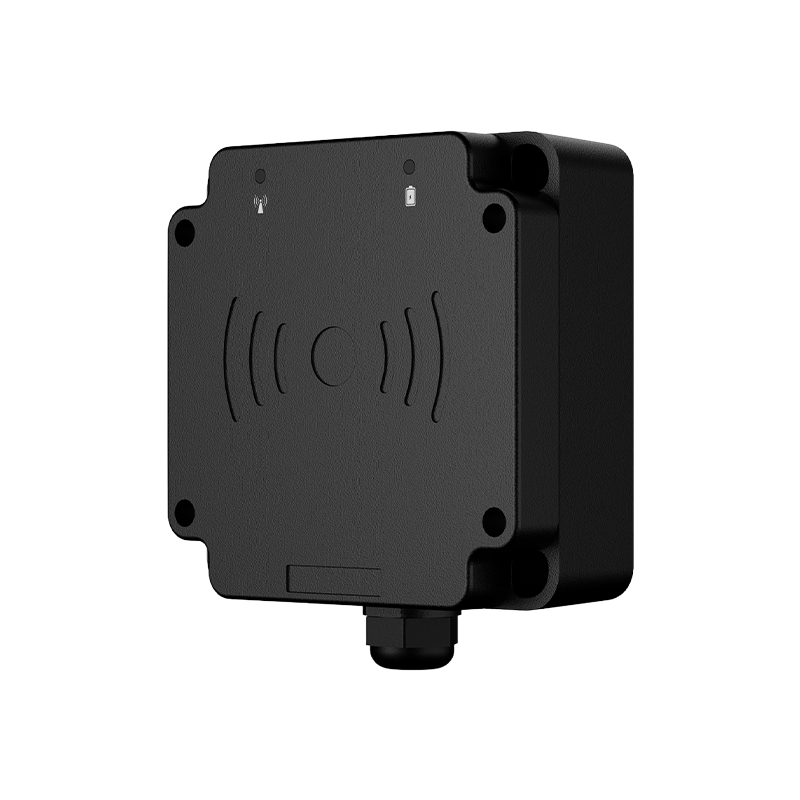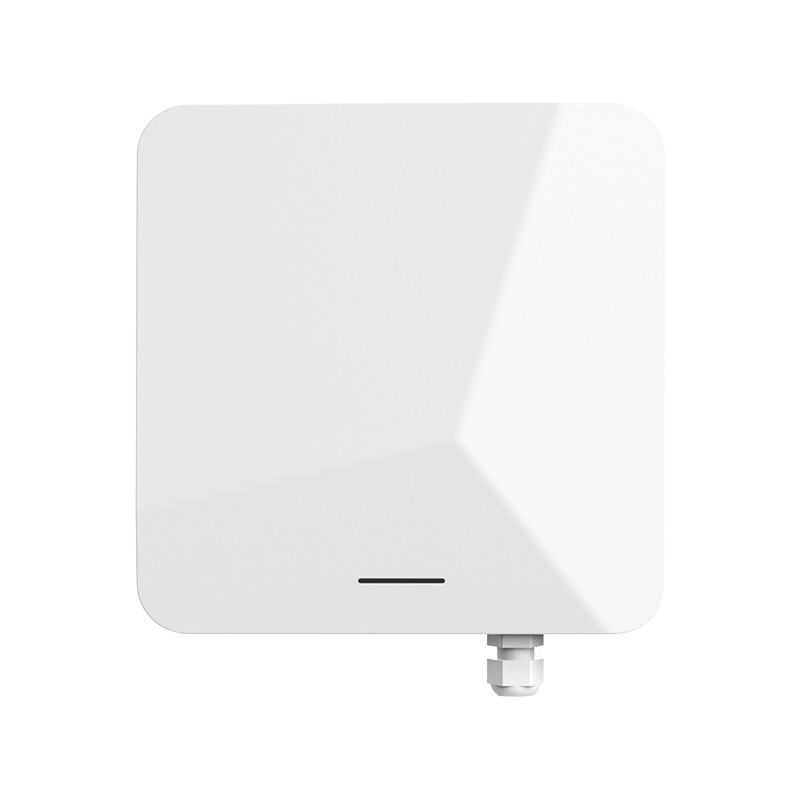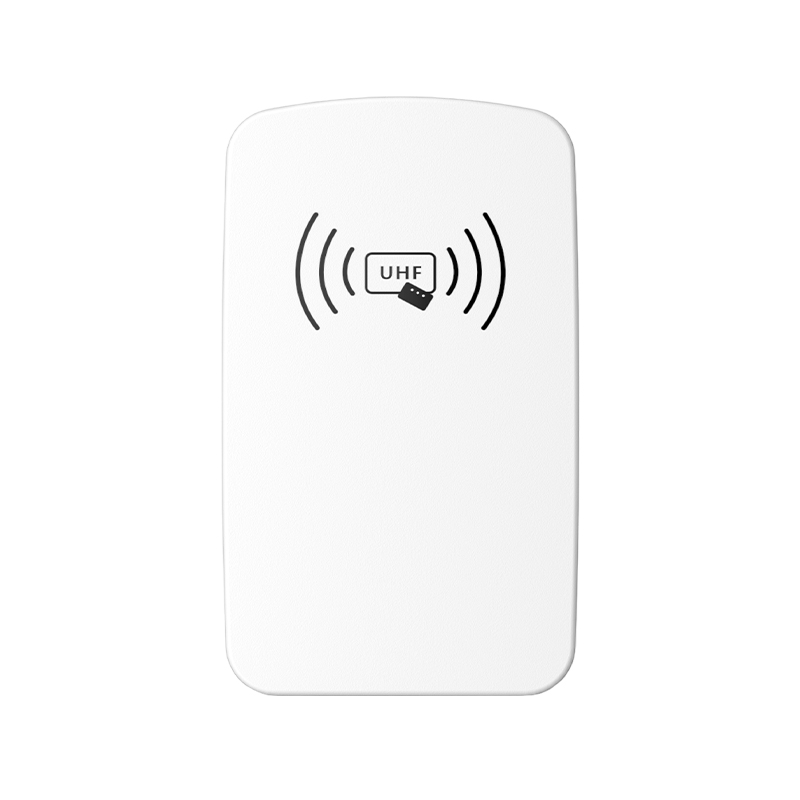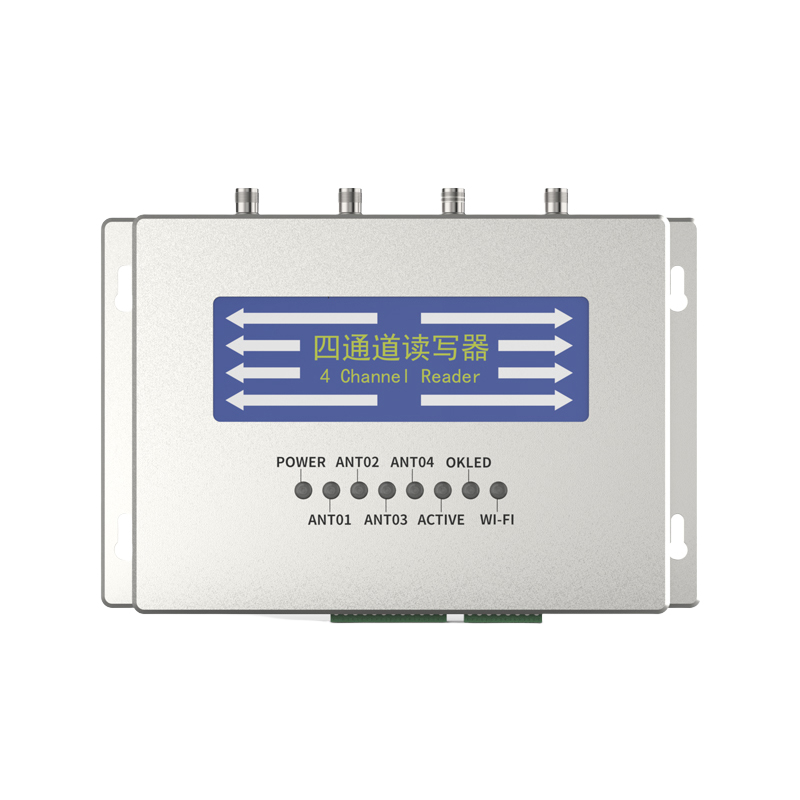What are the specific strengths of the RFID reader module's multi-tag recognition capabilities?
Release Time : 2025-10-02
In application scenarios such as the Internet of Things, smart warehousing, smart logistics, smart manufacturing, and asset management, efficient and accurate batch identification of RFID tags is a core prerequisite for automated management. The professional-grade four-channel UHF fixed-type reader module, developed based on the TM series platform, demonstrates significant advantages in multi-tag recognition thanks to its advanced architecture and signal processing capabilities. The RFID reader module's "strong multi-tag recognition capabilities" are not just a general statement; they are reflected in multiple dimensions, including recognition speed, concurrent processing, anti-interference capabilities, and system stability, making it an ideal choice for high-density tag environments.
1. Four-channel concurrent scanning significantly improves recognition efficiency
Traditional single-channel readers can only operate one antenna at a time, resulting in "blind spots" and "time delays," making them prone to missed reads in densely packed environments. The RFID reader module, however, features four independent RF channels, enabling simultaneous connection and polling of four antennas, achieving spatial diversity and temporal parallelism. This means the reader can scan multiple areas in a fraction of the time, significantly shortening the overall recognition cycle. In high-speed traffic scenarios like warehouse entrances and exits and production line sorting lines, the four-channel design ensures rapid capture even when multiple tags enter the read range simultaneously, preventing missed or duplicate reads due to scanning delays. This significantly improves recognition efficiency several times over single-channel devices.
2. Advanced anti-collision algorithm ensures accurate recognition of high-density tags
When multiple RFID tags simultaneously enter the reader's electromagnetic field, their signals interfere with each other, causing "tag collisions" and leading to recognition failures. The RFID reader module features a high-performance processor and optimized anti-collision algorithm, which intelligently allocates communication timing to wake up and identify each tag individually. Even in high-density environments with hundreds or even thousands of tags passing through per second, the system maintains stable recognition rates, effectively reducing false reads and missed reads. This powerful concurrent processing capability makes it particularly suitable for tag-intensive applications such as library management, apparel retail inventory, and medical supplies tracking.
3. Long-range reading capability enhances multi-tag coverage
This reader module boasts a long read range, with a typical read range of over 10 meters. Long-range reading means a single reader can cover a larger physical area, enabling simultaneous identification of more widely distributed tags. In large warehouses or open-air storage yards, a four-channel reader, combined with a directional antenna, can simultaneously scan multiple storage locations or transport vehicles, eliminating the need for extensive equipment deployment and reducing system complexity and cost. The combination of long range and multiple channels further enhances the coverage and practicality of multi-tag identification.
4. Intelligent Inter-Channel Collaboration for Optimized Signal Distribution
Four-channel readers not only support independent operation but also enable coordinated control between channels through software configuration. For example, different channels can be configured to use different power or scanning frequencies to avoid signal interference between adjacent antennas. The system dynamically adjusts the transmission parameters of each channel based on the site environment to achieve optimal electromagnetic field distribution, ensuring that tags in every area receive a stable wake-up signal, improving overall recognition uniformity and reliability. This intelligent scheduling capability effectively eliminates signal overlap and blind spots in multi-antenna deployments.
5. High protection ensures stable operation in complex environments.
Multi-tag identification relies not only on algorithms but also on robust hardware support. This reader module boasts high protection, typically achieving an IP67 rating, effectively resisting industrial environmental interference such as dust, moisture, and vibration. Even in workshops subject to high temperatures, high humidity, or complex electromagnetic environments, the device maintains stable operation, ensuring consistent multi-tag recognition and data integrity. This is crucial for automation systems that require 24/7 uninterrupted operation.
6. Easy Installation and Flexible Configuration, Suitable for Diverse Applications
Despite its powerful performance, the module maintains easy installation and configuration. Supporting standard interfaces, it can be quickly integrated into existing systems. Users can flexibly configure parameters such as the operating mode, power, and scanning cycle for each channel through the accompanying software, optimizing multi-tag recognition strategies for different scenarios. Whether fixedly mounted on a door frame, conveyor belt, or integrated into an AGV, it can be quickly deployed and delivers efficient recognition capabilities.
The RFID reader module's multi-tag recognition capabilities are driven by its combined advantages of four-channel concurrent scanning, advanced anti-collision algorithms, long-range coverage, intelligent channel coordination, and high environmental adaptability. It not only improves recognition speed and accuracy, but also demonstrates excellent stability and scalability in complex industrial environments. As the application of the Internet of Things continues to deepen, this high-performance reader module will become the cornerstone for building efficient, intelligent, and reliable RFID systems, driving various industries towards digitalization and automation.
1. Four-channel concurrent scanning significantly improves recognition efficiency
Traditional single-channel readers can only operate one antenna at a time, resulting in "blind spots" and "time delays," making them prone to missed reads in densely packed environments. The RFID reader module, however, features four independent RF channels, enabling simultaneous connection and polling of four antennas, achieving spatial diversity and temporal parallelism. This means the reader can scan multiple areas in a fraction of the time, significantly shortening the overall recognition cycle. In high-speed traffic scenarios like warehouse entrances and exits and production line sorting lines, the four-channel design ensures rapid capture even when multiple tags enter the read range simultaneously, preventing missed or duplicate reads due to scanning delays. This significantly improves recognition efficiency several times over single-channel devices.
2. Advanced anti-collision algorithm ensures accurate recognition of high-density tags
When multiple RFID tags simultaneously enter the reader's electromagnetic field, their signals interfere with each other, causing "tag collisions" and leading to recognition failures. The RFID reader module features a high-performance processor and optimized anti-collision algorithm, which intelligently allocates communication timing to wake up and identify each tag individually. Even in high-density environments with hundreds or even thousands of tags passing through per second, the system maintains stable recognition rates, effectively reducing false reads and missed reads. This powerful concurrent processing capability makes it particularly suitable for tag-intensive applications such as library management, apparel retail inventory, and medical supplies tracking.
3. Long-range reading capability enhances multi-tag coverage
This reader module boasts a long read range, with a typical read range of over 10 meters. Long-range reading means a single reader can cover a larger physical area, enabling simultaneous identification of more widely distributed tags. In large warehouses or open-air storage yards, a four-channel reader, combined with a directional antenna, can simultaneously scan multiple storage locations or transport vehicles, eliminating the need for extensive equipment deployment and reducing system complexity and cost. The combination of long range and multiple channels further enhances the coverage and practicality of multi-tag identification.
4. Intelligent Inter-Channel Collaboration for Optimized Signal Distribution
Four-channel readers not only support independent operation but also enable coordinated control between channels through software configuration. For example, different channels can be configured to use different power or scanning frequencies to avoid signal interference between adjacent antennas. The system dynamically adjusts the transmission parameters of each channel based on the site environment to achieve optimal electromagnetic field distribution, ensuring that tags in every area receive a stable wake-up signal, improving overall recognition uniformity and reliability. This intelligent scheduling capability effectively eliminates signal overlap and blind spots in multi-antenna deployments.
5. High protection ensures stable operation in complex environments.
Multi-tag identification relies not only on algorithms but also on robust hardware support. This reader module boasts high protection, typically achieving an IP67 rating, effectively resisting industrial environmental interference such as dust, moisture, and vibration. Even in workshops subject to high temperatures, high humidity, or complex electromagnetic environments, the device maintains stable operation, ensuring consistent multi-tag recognition and data integrity. This is crucial for automation systems that require 24/7 uninterrupted operation.
6. Easy Installation and Flexible Configuration, Suitable for Diverse Applications
Despite its powerful performance, the module maintains easy installation and configuration. Supporting standard interfaces, it can be quickly integrated into existing systems. Users can flexibly configure parameters such as the operating mode, power, and scanning cycle for each channel through the accompanying software, optimizing multi-tag recognition strategies for different scenarios. Whether fixedly mounted on a door frame, conveyor belt, or integrated into an AGV, it can be quickly deployed and delivers efficient recognition capabilities.
The RFID reader module's multi-tag recognition capabilities are driven by its combined advantages of four-channel concurrent scanning, advanced anti-collision algorithms, long-range coverage, intelligent channel coordination, and high environmental adaptability. It not only improves recognition speed and accuracy, but also demonstrates excellent stability and scalability in complex industrial environments. As the application of the Internet of Things continues to deepen, this high-performance reader module will become the cornerstone for building efficient, intelligent, and reliable RFID systems, driving various industries towards digitalization and automation.







